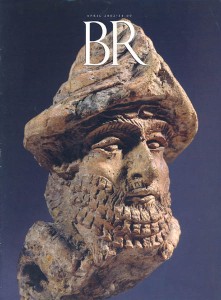How the Qur’an Came to Be
Sidebar to: Abraham’s Sons
Sometime around 610 C.E. an event occurred near the city of Mecca in modern day Saudi Arabia that changed the course of human history. A man named Muhammad, then about 40 years old, was meditating when he heard a voice that ordered him, “Recite!” (in Arabic, Iqra).
The voice, according to Islamic belief, belonged to the angel Gabriel, who had been sent from Allah (the Arabic word for God) to reveal a divine message that Muhammad was to deliver to his people. (Gabriel blows his horn in the manuscript illumination below, dated to about 1400. The image appears in a once-popular Arabic encyclopedia titled The Wonders of Creation and the Oddities of Existence, which was compiled in Iraq in 1270. Although religious images were never included in Muslim holy books like the Qur’an, they do occasionally appear in epic stories and histories produced for the ruling classes.) During the next 22 years, until his death in the city of Medina in 632 C.E., Muhammad continued to receive similar messages. The Qur’an is the record of these revelations.
The Qur’an (sometimes spelled Koran) is about the same length as the New Testament and comprises 114 chapters of varying length that contain approximately 6,200 verses. Each chapter, or
Already a library member? Log in here.
Institution user? Log in with your IP address.

